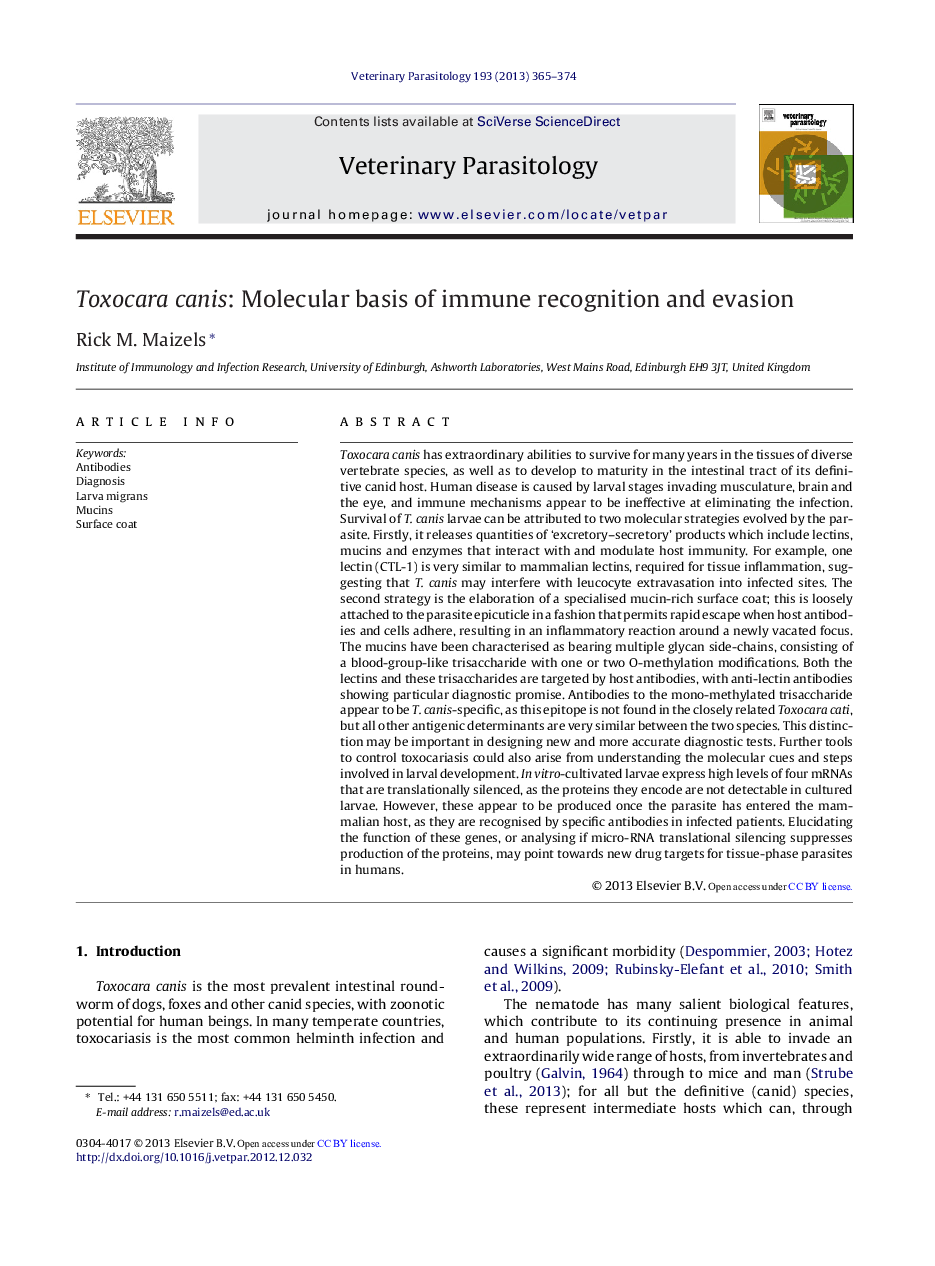| کد مقاله | کد نشریه | سال انتشار | مقاله انگلیسی | نسخه تمام متن |
|---|---|---|---|---|
| 2470042 | 1112458 | 2013 | 10 صفحه PDF | دانلود رایگان |

Toxocara canis has extraordinary abilities to survive for many years in the tissues of diverse vertebrate species, as well as to develop to maturity in the intestinal tract of its definitive canid host. Human disease is caused by larval stages invading musculature, brain and the eye, and immune mechanisms appear to be ineffective at eliminating the infection. Survival of T. canis larvae can be attributed to two molecular strategies evolved by the parasite. Firstly, it releases quantities of ‘excretory–secretory’ products which include lectins, mucins and enzymes that interact with and modulate host immunity. For example, one lectin (CTL-1) is very similar to mammalian lectins, required for tissue inflammation, suggesting that T. canis may interfere with leucocyte extravasation into infected sites. The second strategy is the elaboration of a specialised mucin-rich surface coat; this is loosely attached to the parasite epicuticle in a fashion that permits rapid escape when host antibodies and cells adhere, resulting in an inflammatory reaction around a newly vacated focus. The mucins have been characterised as bearing multiple glycan side-chains, consisting of a blood-group-like trisaccharide with one or two O-methylation modifications. Both the lectins and these trisaccharides are targeted by host antibodies, with anti-lectin antibodies showing particular diagnostic promise. Antibodies to the mono-methylated trisaccharide appear to be T. canis-specific, as this epitope is not found in the closely related Toxocara cati, but all other antigenic determinants are very similar between the two species. This distinction may be important in designing new and more accurate diagnostic tests. Further tools to control toxocariasis could also arise from understanding the molecular cues and steps involved in larval development. In vitro-cultivated larvae express high levels of four mRNAs that are translationally silenced, as the proteins they encode are not detectable in cultured larvae. However, these appear to be produced once the parasite has entered the mammalian host, as they are recognised by specific antibodies in infected patients. Elucidating the function of these genes, or analysing if micro-RNA translational silencing suppresses production of the proteins, may point towards new drug targets for tissue-phase parasites in humans.
Journal: Veterinary Parasitology - Volume 193, Issue 4, 15 April 2013, Pages 365–374